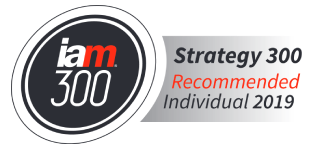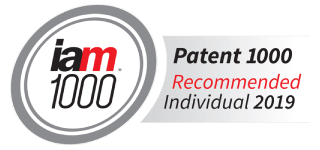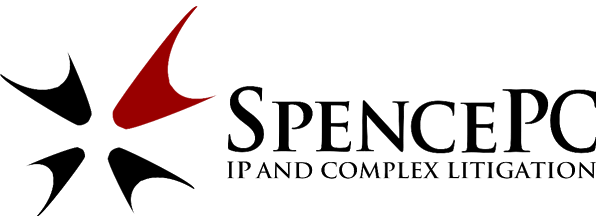Services
Practice Areas
Why SpencePC?
Clients choose SpencePC because we do outstanding work for fair compensation. Unlike our competitors, we encourage the use of alternative-fee agreements that more closely align our clients’ interests with the Firm’s interests. As a result, our clients pay only for the value they receive.
Our Philosophy
Our philosophy is simple: be outstanding and offer a unique value proposition. Hourly billing creates the wrong incentive for attorneys to work longer, not smarter. Instead, we encourage alternative-fee arrangements that reward success and efficiency. By doing so, our attorneys remain focused on obtaining the best results for our clients in the most cost-efficient manner.
Our Skills
We are attorneys who specialize in intellectual property and complex litigation. We hold science, engineering, and law degrees from the nation’s top schools. Following our education, each of us received years of additional training from prestigious, top-tier law firms. Our billing model ensures we remain focused on obtaining the best results in the most cost-efficient manner.
Associations & Accolades
Protecting Slogan Trademarks – Intellectual Property 101
A perfectly crafted slogan
A perfectly crafted slogan is a central component to the marketing campaigns of any commercial interest. A phrase that cleverly sticks in the mind of consumers can have tremendous value as a piece of intellectual property. Over the years, many famous slogans have even been protected by trademark, such as is the case with Nike’s “Just Do It” and Wendy’s “Where’s the Beef?” ad campaigns.
Maybe your marketing team has conceived an original catchphrase that has caught on with your customers. The first step in the trademark process, as always, is to perform a search of the database of trademarks registered with the U.S. Patent and Trademark Office. The intended trademark must not be registered in order to move ahead with the process.
It’s also very important to consider your slogan’s purpose, as this will have a great effect on whether or not it is eligible for a trademark. For example, the “Where’s the Beef?” campaign was based on Wendy’s assertion that its burgers were beefier than its fast food rivals. A clever line can resonate with a large audience, but if it doesn’t have anything to do with a company’s good or service being sold, the chances that a trademark will be issued decrease. Slogans that can be trademarked should be both distinctive and capable of calling a product or service to a consumer’s mind.
Other ways to protect your slogan and trademark
Another way to improve the chances that a slogan can be trademarked is by inserting the company’s brand name directly into the phrasing. A benefit of this approach is the fact that it’s quite unlikely the name will already be registered for a trademark. It also more clearly ties the slogan to the company, along with the products or services which it sells.
What is “secondary meaning”?
The biggest consideration in drafting a slogan that is eligible for trademark is to create one that achieves a secondary meaning in the mind of the consumer. Secondary meaning is established when a phrase transcends its literal meaning in order to take on an association that is valuable to a business. “Where’s the Beef?” doesn’t just sell burgers, it sells Wendy’s assertion that its burgers are beefier than the competition. “Just Do It” assures athletes that they’ll be capable of performing to the best of their abilities when using Nike’s sports equipment. Typically, a slogan will need to be in use for a few years in order to develop this sense of secondary meaning.
Although secondary meaning is important to establish, it’s possible that a slogan can go too far in the direction of describing a good or service. For this reason, “Where’s the Beef?” becomes a trademark-eligible slogan, whereas “Wendy’s Burgers Have More Beef” would be too descriptive of a slogan and would likely face obstacles at the USPTO. Remember that it’s more important for a slogan or catchphrase to be distinctive rather than descriptive, especially in terms of trademark eligibility.
Trademarking difficulties
If an applicant has difficulty in obtaining a trademark on a phrase, it may help to turn that phrase into some form of artwork in order to obtain a design trademark. Developing artwork for use with the company slogan also opens up certain opportunities for copyright protection, which is not available for phrases and short titles. Again, however, the artwork has to be functional and not simply a decorative feature, as the USPTO will not issue trademarks on items which are merely ornamentation.
An effective intellectual property strategy when obtaining a trademark for a slogan should include the enforcement of those trademark rights over time, regardless of how actively the slogan is used in current advertisements. Nike, for instance, has filed suit against companies in the past for infringing on the “Just Do It” slogan. As with any trademark, a registered trademark owner must file for trademark renewal and pay associated fees within a certain time frame. Those holding trademarks for slogans may want to renew even if the slogan isn’t actively being used in marketing materials as companies sometimes return to slogans at a later point in time in order to reconnect with consumers.
The post Protecting Slogan Trademarks – Intellectual Property 101 appeared first on SpencePC.











